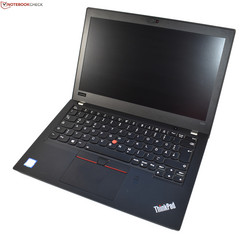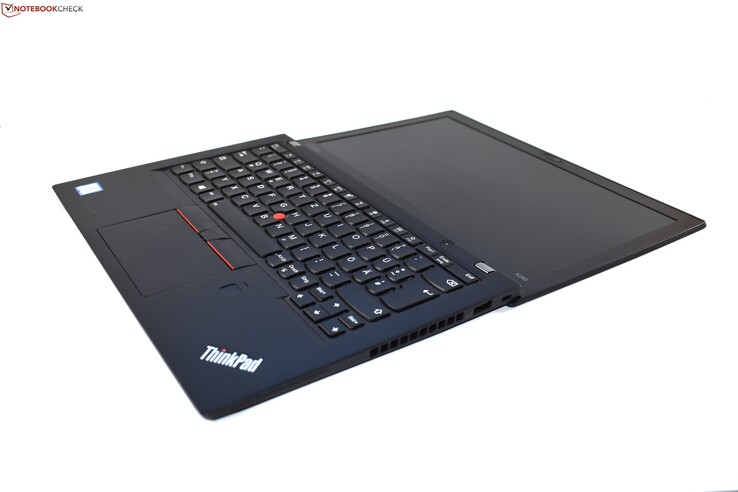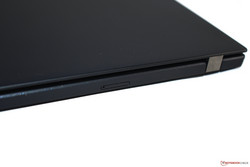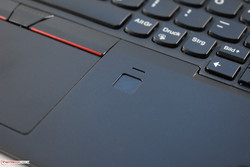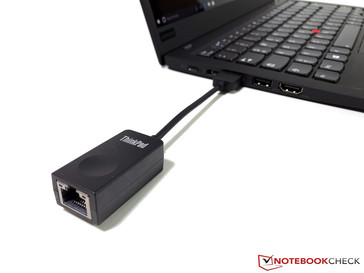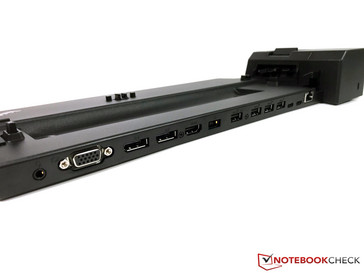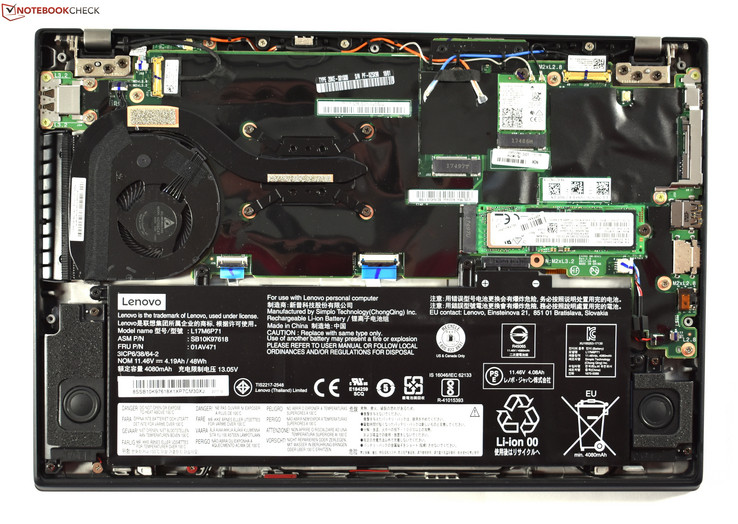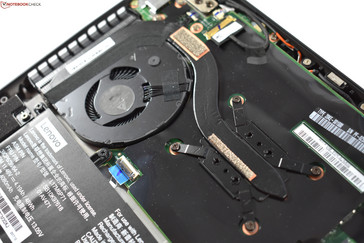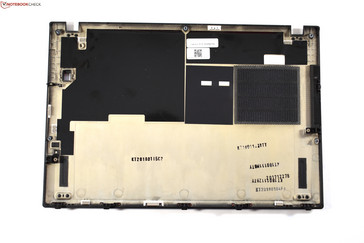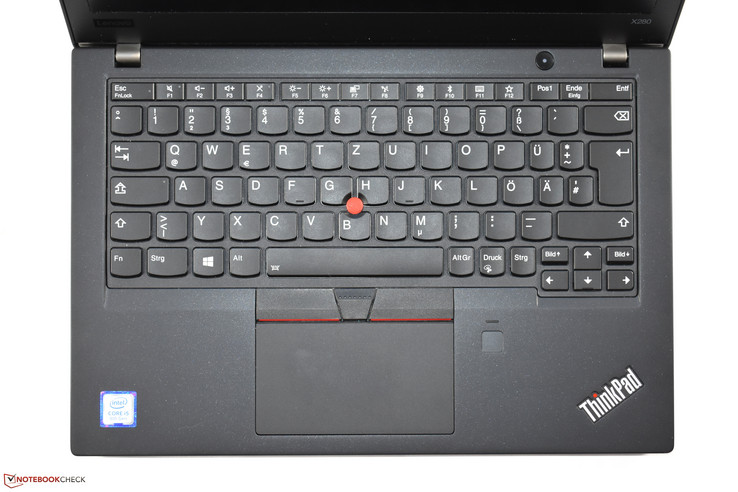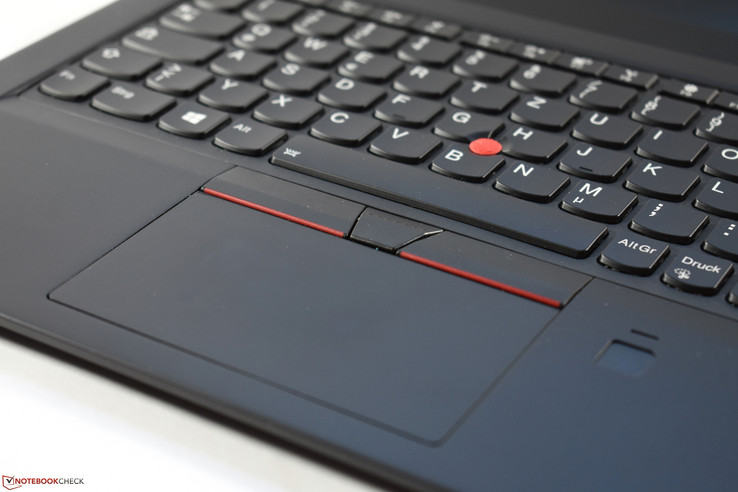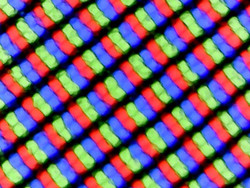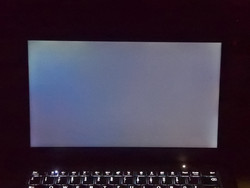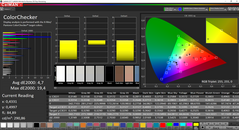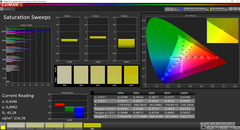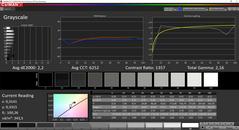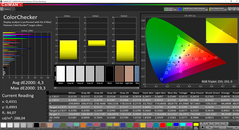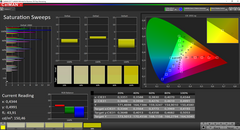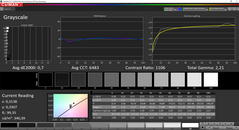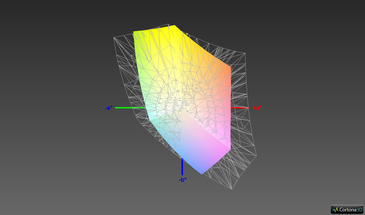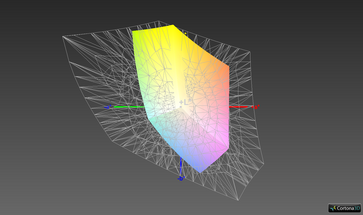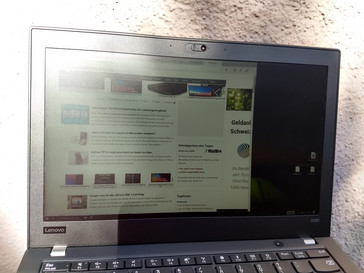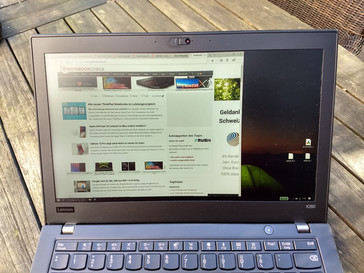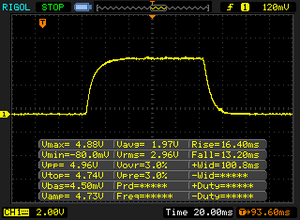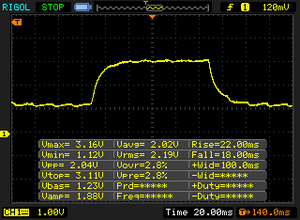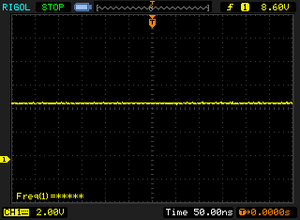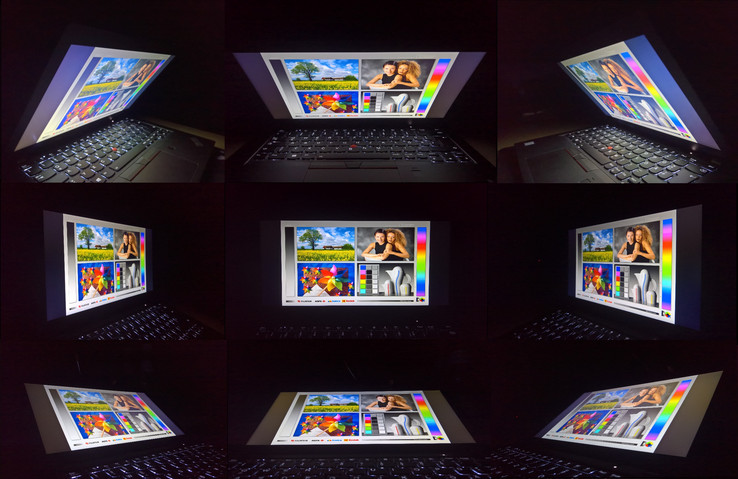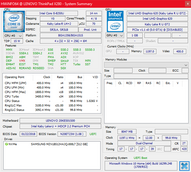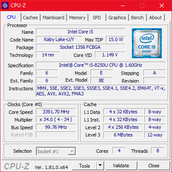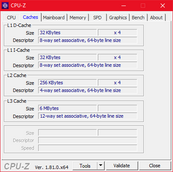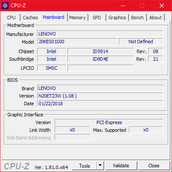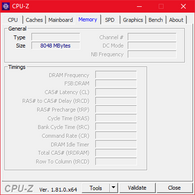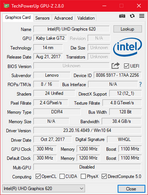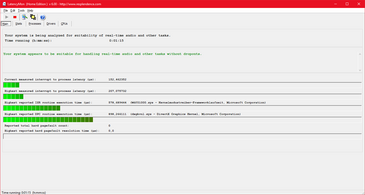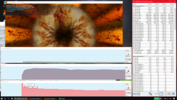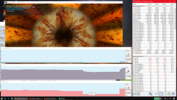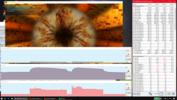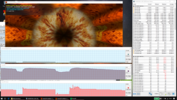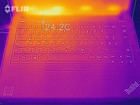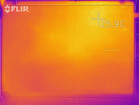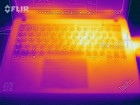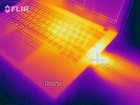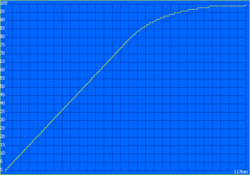Lenovo ThinkPad X280 (i5-8250U, FHD) Laptop Review

In the 2000s, the notebook market was divided. If someone needs a laptop mainly for desk work, then they bought a classic notebook. If mobility was more important then there were subnotebooks with 13.3-inch and smaller displays. Subnotebooks were characterised by having similar performance to larger notebooks without compromising, by contrast to the even smaller and more mobile netbooks.
Today the situation looks different, and since the emergence of the Ultrabook larger notebooks have been becoming more mobile. This move towards greater mobility across all laptop classes has reduced the unique selling points of subnotebooks, with Lenovo’s development of its ThinkPad X series being a prime example of this. Five years ago, Lenovo sold the ThinkPad X230, a popular and traditional subnotebook. The X230 had standard voltage processors, 35 W TDP at the time, two RAM slots, an HDD slot, RJ45 Ethernet, an ExpressCard slot, and expandable batteries. During this time Lenovo launched its first Ultrabook, the ThinkPad X1 Carbon 2012, which switched these features for a thinner case.
Since then the X1 Carbon has come a long way, with it now being in its sixth generation. Lenovo last fundamentally redesigned the classic X2xx series, whose roots can be traced back to 2000, in 2013 with the X240. Each of the X240’s successors have compromised between the concept of the classic subnotebook and the design of an Ultrabook. One of these models’ standout features were there two batteries, one of which being internal while the other was external and could be hot swapped. This design choice allowed Lenovo to reduce the thickness of the X240 onwards, but not nearly as thin as the X1 Carbon, the latter of which has become increasingly popular in the last year. The lightest X series laptop even weighed more than the T400s series, namely the T470s.
The new ThinkPad X280 changes this though, with Lenovo completely redesigning the X Series for this year. Combining this with Intel’s new low powered quad-core processors makes for an interesting mix, which we will be taking a closer look at in this review. The X280 is the first 2018 model of business class laptops that we are testing. As a result, we will be using last year’s Dell Latitude 7280 and HP EliteBook 820 G4 as comparison devices, instead of the yet untested Dell Latitude 7290 and HP EliteBook 830 G5. Moreover, we will be comparing the X280 with the Latitude 7380, the X1 Carbon 2018 and naturally the X280’s predecessor, the X270.
Our X280 is not currently available as it is the campus configuration, which is exclusively for students and other groups, such as teachers. Our test device has a Full-HD IPS Display, 8 GB Ram, a Core i5-8250U, and a 512 GB SSD, costing €1,129. A Windows licence is not included with this configuration. A similar configuration with Windows costs €1,655 in the Lenovo Store.
Case – Magnesium and Carbon combination
The X280 looks almost completely different compared with the X270, which is contrary to the often-expressed opinion that all ThinkPads look the same. The case colour and shape have changed with the X270 having a dark grey case in the style of 2013 era ThinkPads. The X280 is clearly less boxy than its predecessor with its bottom being more tapered at the front, much like the T480s and the X1 Carbon. Meanwhile, the X280’s anthracite colour made its way to other ThinkPads in 2016, with the X series only now making the jump.
Traditionally, the X series has largely been made of magnesium, with Lenovo moving to glass fibre plastic with an internal magnesium reinforcement from the X240 onwards. This design looked like the normal T series, namely the ThinkPad T470. With the X280, Lenovo has used similar materials to those found on the T480s, with the base being made of magnesium and there being a carbon fibre plastic display cover. These differences in materials are tough to spot though as the entire of the X280 is painted black. The surface is velvety soft and feels good in the hand, a departure from the classic gum texture from past ThinkPads.
The X280 is more robust than its predecessor, with it only being possible to twist the base with great effort. The very thin carbon fibre plastic display cover lacks the same rigidity as the base and is neither as stiff as some aluminium display covers either. The greater flexibility does not come at a cost to rigidity though. There are no visible effects to the display even when applying strong pressure to the back of the cover, with the palm rest being just as imperceptible to pressure too. At most, we occasionally heard a slight clicking sound when twisting the X280 from its base.
The two hinges with metal caps are sturdy, while still allowing the display to be opened one-handed. As is common with ThinkPads, the X280’s display can be opened to 180°.
It is worth noting that not all X280’s come with a carbon fibre plastic display cover. Those with an HD display or a Full-HD touchscreen display have a glass fibre display cover, which adds approximately 130 grams to the X280’s overall weight.
In comparison to the X270, the X280 is significantly thinner and lighter, weighing around 230 grams less while being almost three millimetres thinner. The result of this is that the X280 feels practically as light as a feather, with the X280 weighing more like the more expensive X1 Carbon 2018. In terms of size, the main size differences between the X280 and the X1 Carbon 2018 are that the latter is thinner but markedly larger. The size differences between the X280 and the X1 Carbon 2018 is closer than that between X280 and its predecessor, with the X280 being a few millimetres deeper and wider.
Interestingly the Dell Latitude 7380, while being practically the same size as the X280, has a 13.3-inch display to the X280’s 12-inch. HP gave up on the 12.5-inch form factor this year, making the EliteBook 830 G5 in the image of the EliteBook 820 G4. On the other hand, Dell still offers the Latitude 7390 and the smaller Latitude 7290. Lenovo could have been more efficient in their use of space with the X280 as a 13.3-inch display probably would have fit. Unfortunately, remaining with a 12-inch display results in the X280 having bezels that are wider than necessary.
Connectivity – the slimming of the X series
As part of the X series redesign for the X280, Lenovo has made changes to the I/O. The proprietary docking port on the bottom is gone, with Lenovo including a docking port on the side of the case instead. Lenovo has equipped the X280 with two USB Type-C ports, that being one more than the X270 had, with one also now being Thunderbolt 3. The X280 can be charged by either USB-C port, with the slim-tip charging port found on the X270 having been omitted.
Unfortunately, the list of omitted connections does not end there. Lenovo has replaced the RJ45 Ethernet port with a proprietary mini-Ethernet port, which protected by a cover at the factory. There is an adapter in the box, but it amazes us that Lenovo decided against using a fold-out connector like the one on the T480s. While an RJ45 Ethernet port is of little importance for most residential users, it remains important in corporate environments. In comparison, the Dell Latitude 7290 and HP EliteBook 830 G5 both have the added functionality of fold-out Ethernet ports.
There is practically nothing to complain about with I/O positioning with the only complaint being the proximity with which Lenovo have placed the USB Type-A and HDMI ports on the left-hand side. They are slightly too close together, which could prove troublesome if you need to use a wide USB-A peripheral while the X280 is connected to an external display by HDMI.
SD Card Reader
The X280 has a microSD card reader, which is on par with Dell’s business laptops and better than HP’s, who choose to omit an SD card reader from their business laptops altogether. The positioning of the reader on the X280 is identical to the X1 Carbon 2018 with the slot hidden under a flap behind the display. The flap is opened with a pin or SIM removal tool, making it difficult to open in everyday use and being more suitable for permanent memory expansion.
The performance of the card reader using our reference Toshiba Exceria Pro M501 is average. The X1 Carbon 2018’s microSD card reader is much faster.
| SD Card Reader | |
| average JPG Copy Test (av. of 3 runs) | |
| Lenovo ThinkPad X1 Carbon 2018-20KGS03900 (Toshiba Exceria Pro M501) | |
| HP EliteBook 820 G4 Z2V72ET (Toshiba Exceria Pro SDXC 64 GB UHS-II) | |
| Dell Latitude 7280 (Toshiba THN-M401S0640E2) | |
| Lenovo ThinkPad X280-20KES01S00 (Toshiba Excerie Pro M501) | |
| Dell Latitude 13 7380 (Toshiba Exceria Pro SDXC 64 GB UHS-II) | |
| Lenovo ThinkPad X270-20HMS00T00 (Toshiba Exceria Pro SDXC 64 GB UHS-II) | |
| Average of class Subnotebook (18.4 - 142, n=13, last 2 years) | |
| maximum AS SSD Seq Read Test (1GB) | |
| Lenovo ThinkPad X1 Carbon 2018-20KGS03900 (Toshiba Exceria Pro M501) | |
| Dell Latitude 7280 (Toshiba THN-M401S0640E2) | |
| Lenovo ThinkPad X270-20HMS00T00 (Toshiba Exceria Pro SDXC 64 GB UHS-II) | |
| Dell Latitude 13 7380 (Toshiba Exceria Pro SDXC 64 GB UHS-II) | |
| HP EliteBook 820 G4 Z2V72ET (Toshiba Exceria Pro SDXC 64 GB UHS-II) | |
| Lenovo ThinkPad X280-20KES01S00 (Toshiba Excerie Pro M501) | |
| Average of class Subnotebook (22.5 - 207, n=13, last 2 years) | |
Communication
The X280’s mini-Ethernet port is powered by an Intel I219-V chip, with WiFi handled by an Intel Wireless 8265 2x2 AC card, the combination of which is common for current business laptops.
A variant with LTE compatibility is available for those who need internet access on-the-go. Our test device did not come with such functionality, but this can be retrofitted with the required antennas and nano-SIM card slot. The X280 requires specifically compatible cards, namely the Fibocom L850-GL, to enable LTE functionality. Lenovo has assigned this the part number 01AX786. Currently, this does not seem to be available.
Lenovo has placed the X280’s webcam and microphones above the display, which should provide a good angle for video calls.
Security
The X280 is a true business laptop to the extent that it has numerous security hardware and software features. These include TPM, a Kensington Lock and a smart card slot, the latter of which is not available in our test device’s campus configuration.
Additionally, Lenovo includes ThinkShutter, a mechanical camera shutter that is available on practically all ThinkPads released in 2018. The only caveat is that ThinkShutter is only in combination with 720p webcams, so there are no ThinkShutter webcams with infrared, meaning that it is not possible to have Windows Hello enabled cameras with ThinkShutter. With that caveat aside, Lenovo offers biometric security with Windows Hello enabled infrared cameras and a touch fingerprint reader, the latter of which is located to the right of the touchpad and recognises fingerprints quickly without error.
Accessories
Lenovo includes a USB-C power supply and a mini-Ethernet to RJ45 Ethernet adapter as standard. The adapter is officially named the ThinkPad Ethernet Extension Adapter Gen 2.
The most important accessories are the optional mechanical ThinkPad docks, of which there are three trim levels. There is the ThinkPad Basic Dock, the Pro Dock and the Ultra Dock. The latter offers the most ports and is the one that we took a closer look at in our recent X1 Carbon 2018 review.
Maintenance
A consistent criticism of X series ThinkPads since the X240 was their difficult serviceability. Specifically, the plastic clips that secured the base cover along with the screws proved fragile. Fortunately, Lenovo has rectified this as opening the X280 is easier than its predecessors. There are fewer screws, five down from eight, and there are only plastic clips at the front edge of the bottom case. This means that once the screws have been loosened the back cover can be lifted upwards, thereby loosening the clips on the front edge.
Unfortunately, the X280’s upgradability is worse than its predecessor, with the RAM soldered to the main board just as in the X1 Carbon 2018. The X270 had a SO-DIMM slot while in the X230 there were two memory slots. Only the 2280-M.2 slot and empty 2242-M.2 port for LTE are upgradable. The battery and cooling system are easily accessible, with the battery only screwed and not glued in.
A further improvement in serviceability is the keyboard design. Lenovo hides two keyboard screws below the TrackPoint buttons for which special tools are needed that come with a replacement keyboard. For this reason, we did not want to remove the keyboard. By contrast, accessing the keyboard on the X270 required removing all internal components including the motherboard.
As with all ThinkPads, Lenovo includes a comprehensive hardware maintenance manual with the X280.
Warranty
In Germany, the more expensive T and X series ThinkPads have a comprehensive warranty package. The X280 comes with a thirty-six-month warranty and on-site service whereby the technician repairs the device at the customer’s home or workplace. This warranty can be extended up to five years for an extra charge. This also provides accidental damage coverage and a longer battery warranty, the latter of which Lenovo by default covers for only one year.
Please see our Guarantees, Return Policies and Warranties FAQ for country-specific information.
Input Devices – ThinkPad precision in a small format
Keyboard
The keyboard is one of the few areas on the X280 that has not been changed from its predecessor, which is no bad thing as it remains one of the best laptop keyboards. The ThinkPad chiclet keyboard has six rows of keys and a two-stage keyboard backlight that is outstanding. Keys have 1.8 mm of travel, which is great by today’s standards, while there is just the right amount of key pressure. The surface of the keys is rather smooth. The keyboard is not distracting, as is the case on the 12-inch MacBook.
The keyboard layout has minor differences to those on other ThinkPads such as the T480s or the X1 Carbon 2018. The keyboard size has reduced to account for the X280 being narrower than its predecessor, while certain keys, such as the umlauts Ä and Ü, the three keys to the right of the spacebar and the backspace key, are smaller than usual. Moreover, Lenovo has removed a dedicated Insert key, which can be accessed by pressing FN and the End key. This could take some getting used to or even frustrate those who are used to full-width keyboards.
Mouse Replacement
Since the introduction of the ThinkPad X201 in 2010, Lenovo has steadily improved upon touchpads in the ThinkPad X Series. The X280 has thus far the largest touchpad on a 12-inch X series laptop, measuring 10 x 5.5 cm. These dimensions make the X280’s touchpad the same width as touchpads found on larger ThinkPads, and only a little shorter. Compared to the layout of its predecessor, Lenovo have increased the length of the X280’s touchpad by moving the TrackPoint buttons closer to the keyboard and by eliminating the space between the touchpad and the TrackPoint buttons.
Like the T series, the touchpad is plastic, which Lenovo calls Mylar. By contrast, the X1 Carbon 2018 has a glass touchpad. While we cannot fault the texture, it does not feel as premium as that found on the X1 Carbon 2018. The touchpad works well as a click pad, with only the lower half being clickable. The integrated keys are crisp and are quiet when clicked. Better still, Lenovo has made use of Windows Precision touchpad drivers, rendering touchpad problems a thing of the past. Accordingly, the X280’s touchpad is accurate and works without issue.
We must not forget the TrackPoint, the hallmark of the ThinkPad, to the extent that it is even represented in the ThinkPad logo. The TrackPoint, first invented by IBM who manufactured the ThinkPad until 2005, still sits between the B/G/H keys. The X280 still has the three-dedicated mouse buttons that sit below the keyboard, each of which being well crafted with a relatively shallow travel and a crisp pressure point. While the TrackPoint is precise, it lacks the same sensitivity than those found of other ThinkPads. This reduced sensitivity could be because Lenovo has reduced the thickness of the keyboard, making the TrackPoint smaller in height too. Despite this, the X280’s TrackPoint remains a good alternative to the touchpad, one which may take new users some getting used to.
Display – IPS with good brightness and dull colours
The number of display options on the X280 is lower than that found on the X270. Lenovo has made the selection simpler by removing the HD-IPS option, which had a 1,366 x 768 resolution. There is a choice between an HD-TN panel and a Full-HD 1,920 x 1,080 IPS panel, the latter being the one that our test device has. Optionally, there is a touchscreen variant of the Full-HD IPS display. All options have a matte finish.
The key data of the Full-HD remains the same as on the X270, with Lenovo continuing to rate the brightness at 300 cd/m². Our test device, with an AUO produced panel, averages higher values at 312 cd/m², while we measured the maximum brightness at 346 cd/m². As indicated by the difference between the maximum and average values, the X280’s display lacks uniform brightness, averaging 82%. Subjectively, we could not notice the differences in brightness.
Last year’s competitors all have similarly bright screens. According to HP’s spec sheet, the EliteBook 830 G5 has a much brighter Full-HD IPS display option with 400 cd/m² brightness. Currently, the only ThinkPads with bright displays are the X1 Carbon 2018 and the X1 Yoga 2018, each of which have a QHD HDR LTPS option with over 500 cd/m² brightness. The drawback of these panels is that they have glossy finishes.
The X280’s display has minimal backlight bleeding and no PWM display flickering.
| |||||||||||||||||||||||||
Brightness Distribution: 82 %
Center on Battery: 336 cd/m²
Contrast: 1376:1 (Black: 0.25 cd/m²)
ΔE ColorChecker Calman: 4.7 | ∀{0.5-29.43 Ø4.78}
ΔE Greyscale Calman: 2.2 | ∀{0.09-98 Ø5}
64.1% sRGB (Argyll 1.6.3 3D)
41.2% AdobeRGB 1998 (Argyll 1.6.3 3D)
45.45% AdobeRGB 1998 (Argyll 3D)
64.5% sRGB (Argyll 3D)
44% Display P3 (Argyll 3D)
Gamma: 2.16
CCT: 6252 K
| Lenovo ThinkPad X280-20KES01S00 B125HAN02.2, , 1920x1080, 12.5" | Lenovo ThinkPad X270-20HMS00T00 Innolux N125HCE-GN1, , 1920x1080, 12.5" | HP EliteBook 820 G4 Z2V72ET Chi Mei, , 1920x1080, 12.5" | Dell Latitude 7280 AUO236D , , 1920x1080, 12.5" | Lenovo ThinkPad X1 Carbon 2018-20KGS03900 B140QAN02.0, , 2560x1440, 14" | Dell Latitude 13 7380 LGD0589, , 1920x1080, 13.3" | |
|---|---|---|---|---|---|---|
| Display | 1% | 1% | 1% | 91% | 45% | |
| Display P3 Coverage (%) | 44 | 44.6 1% 44.6 1% | 44.45 1% | 44.41 1% | 87.7 99% | 65.5 49% |
| sRGB Coverage (%) | 64.5 | 65.9 2% 65.9 2% | 65.5 2% | 65.4 1% | 100 55% | 91.8 42% |
| AdobeRGB 1998 Coverage (%) | 45.45 | 46.11 1% 46.11 1% | 46.04 1% | 45.9 1% | 99.9 120% | 65.8 45% |
| Response Times | -3% | 12% | 7% | -32% | 8% | |
| Response Time Grey 50% / Grey 80% * (ms) | 40 ? | 40.8 ? -2% | 35 ? 12% | 32.4 ? 19% | 59.2 ? -48% | 34 ? 15% |
| Response Time Black / White * (ms) | 29.6 ? | 30.4 ? -3% | 26 ? 12% | 31.2 ? -5% | 34.4 ? -16% | 29.6 ? -0% |
| PWM Frequency (Hz) | 26040 ? | |||||
| Screen | -21% | -24% | -23% | 38% | -20% | |
| Brightness middle (cd/m²) | 344 | 283 -18% | 326 -5% | 310.4 -10% | 578 68% | 317 -8% |
| Brightness (cd/m²) | 313 | 281 -10% | 304 -3% | 301 -4% | 533 70% | 295 -6% |
| Brightness Distribution (%) | 82 | 94 15% | 81 -1% | 88 7% | 84 2% | 87 6% |
| Black Level * (cd/m²) | 0.25 | 0.25 -0% | 0.29 -16% | 0.32 -28% | 0.38 -52% | 0.3 -20% |
| Contrast (:1) | 1376 | 1132 -18% | 1124 -18% | 970 -30% | 1521 11% | 1057 -23% |
| Colorchecker dE 2000 * | 4.7 | 6.1 -30% | 6.49 -38% | 5.9 -26% | 1.9 60% | 6.3 -34% |
| Colorchecker dE 2000 max. * | 19.4 | 15.4 21% | 15.95 18% | 21 -8% | 3.8 80% | 10.4 46% |
| Greyscale dE 2000 * | 2.2 | 6 -173% | 6.16 -180% | 5.1 -132% | 3 -36% | 7.8 -255% |
| Gamma | 2.16 102% | 2.05 107% | 2.32 95% | 2.33 94% | 2.14 103% | 1.81 122% |
| CCT | 6252 104% | 6832 95% | 7575 86% | 6816 95% | 6377 102% | 7120 91% |
| Color Space (Percent of AdobeRGB 1998) (%) | 41.2 | 42.26 3% | 42 2% | 42 2% | 88.8 116% | 61 48% |
| Color Space (Percent of sRGB) (%) | 64.1 | 65.43 2% | 65 1% | 65 1% | 100 56% | 92 44% |
| Colorchecker dE 2000 calibrated * | 0.8 | |||||
| Total Average (Program / Settings) | -8% /
-11% | -4% /
-14% | -5% /
-14% | 32% /
39% | 11% /
-3% |
* ... smaller is better
The contrast levels in Lenovo’s data sheet are rather conservative at 700:1. The AUO display achieves almost twice that at 1376:1, with a 0.25 cd/m² black level providing deep blacks. Factory colour space is comparatively neutral with a tint that we could not determine. Calibration marginally improves this, but certain deviations could not be rectified. For example, colour saturation issues could not be rectified with the ICC profiled that we created.
The poor colour space coverage is typical of 12.5-inch business laptops, with the competition performing equally as badly as the X280, whose AUO display only represents 64% sRGB. We are curious as to whether this has improved on the EliteBook 830 G5 with its 13.3-inch display.
The X280 is usable outdoors thanks to the display’s matte finish and a brightness exceeding 300 cd/m². That brightness level is no match for direct sunlight though. With the X280 being an ultra-portable laptop that may be often used outdoors, we would have liked Lenovo to offer even brighter display options.
Display Response Times
| ↔ Response Time Black to White | ||
|---|---|---|
| 29.6 ms ... rise ↗ and fall ↘ combined | ↗ 16.4 ms rise | |
| ↘ 13.2 ms fall | ||
| The screen shows relatively slow response rates in our tests and may be too slow for gamers. In comparison, all tested devices range from 0.1 (minimum) to 240 (maximum) ms. » 78 % of all devices are better. This means that the measured response time is worse than the average of all tested devices (20.2 ms). | ||
| ↔ Response Time 50% Grey to 80% Grey | ||
| 40 ms ... rise ↗ and fall ↘ combined | ↗ 22 ms rise | |
| ↘ 18 ms fall | ||
| The screen shows slow response rates in our tests and will be unsatisfactory for gamers. In comparison, all tested devices range from 0.165 (minimum) to 636 (maximum) ms. » 60 % of all devices are better. This means that the measured response time is worse than the average of all tested devices (31.6 ms). | ||
Screen Flickering / PWM (Pulse-Width Modulation)
| Screen flickering / PWM not detected | |||
In comparison: 53 % of all tested devices do not use PWM to dim the display. If PWM was detected, an average of 8108 (minimum: 5 - maximum: 343500) Hz was measured. | |||
The advantage of IPS panels is their viewing angles and colour stability. Colours on TN screens invert as soon as you look at them from any angle other than straight on, which fortunately is not the case with IPS panels. Unfortunately, there are viewing angles issues with some IPS panels, with the X280’s AUO panel losing brightness at extreme viewing angles and there being a visible IPS glow effect. As such, there is a colour tint when looking sideways at the display from either the top or the bottom of the screen. This effect is negligible in daily use, but once we mention as there are many IPS panels that do not have this effect to the same extent.
Performance – sometimes good, sometimes not
The availability of the X280 is currently limited to it not yet available in its standard configuration from many retailers. At the time of writing the X280 is available from dealers who participate in the Lenovo campus program or the Lenovo online store, in which you can configure the X280 on request. There is currently one configuration available in the campus program, that which we are testing. On the other hand, there are many options for configuring the X280 on Lenovo’s online store.
These include different CPU, RAM and SSD choices. In terms of CPUs Lenovo offers the Intel Core i5-8250U and Core i7-8550U, along with their vPro relatives the Core i5-8350U and the Core i7-8650U. There are two RAM options, that being 8 GB or 16 GB of DDR4-2400, which is soldered on. The SSD remains upgradable and comes in a choice of 128 GB, 256 GB, 512 GB, or 1 TB. They are all PCIe NVMe drives with exception to the 128 GB option. There is only one GPU choice though, that being the Intel UHD Graphics 620.
Processor
The Intel Core i5-8250U in our test device is a quad-core Kaby Lake R 8th generation chip released late last year. The Kaby Lake Refresh processors are the first quad-core CPUs with a 15W TDP, making them energy efficient ultra-low-voltage (ULV) processors. Please see out CPU benchmark list for a better understanding of this processor.
Lenovo has increased the TDP in the X280, with the CPU being able to consume up to 29 W for a while. The i5-8250U is clocked at 3.2 GHz and scores 670 points in the Cinebench multicore test, which is comparatively high. The cooling system is not strong enough to maintain the CPU at that speed, as the clock speed starts to drop when temperatures reach above 90 °C. The clock speed dropped by between 100 to 200 MHz for every pass of the Cinebench loop until it hits 2.4 GHz, at which point the clock speed drops no further. At this speed, the CPU consumes 15 W while temperatures plateau at 75 °C. Theoretically, the CPU could then increase its clock speed again, but this does not happen with the processor remaining at this level until the load test has ended.
The X280 outperforms the X1 Carbon 2018 in the individual test, with the X1 Carbon coming out on top when under continuous load thanks to its better cooling system. The X270 is half as fast as its successor, with the performance difference remaining the same across all tests.
Lenovo has limited CPU performance while the X280 is on battery. Without a power supply, the X280 can only draw up to 29 W for twenty-eight seconds and work at around 3.2 GHz, after which the TDP is limited to 15 W while the CPU clocks down to 2.4 GHz. The Cinebench multicore test reflects this, with the X280 achieving 561 points on battery.
System Performance
We cannot fault the system performance. Despite the relatively low PCMark 8 Home test, the X280 is fast and responsive in everyday use.
| PCMark 8 Home Score Accelerated v2 | 3574 points | |
| PCMark 8 Work Score Accelerated v2 | 4868 points | |
| PCMark 10 Score | 3860 points | |
Help | ||
Storage Devices
While the ThinkPad X270 still had a 2.5-inch hard drive slot, the X280 now only has 2280-M.2 slots. The 512 GB SSD in our test device is the Samsung PM981, which is a very fast drive that achieved good results in our benchmarks. While the Toshiba SSD in the X270 was much slower, Lenovo limited it to two lanes of PCIe 3.0 at a speed of 16 GB/s. This is no longer the case with the X280 though.
| Lenovo ThinkPad X280-20KES01S00 Samsung SSD PM981 MZVLB512HAJQ | Lenovo ThinkPad X270-20HMS00T00 Toshiba NVMe THNSF5512GPUK | HP EliteBook 820 G4 Z2V72ET Samsung PM951 NVMe MZVLV512 | Dell Latitude 7280 SanDisk X400 M.2 2280 256GB | Dell Latitude 13 7380 Samsung PM961 MZVLW256HEHP | Lenovo ThinkPad X1 Carbon 2018-20KGS03900 Samsung SSD PM981 MZVLB512HAJQ | Average Samsung SSD PM981 MZVLB512HAJQ | |
|---|---|---|---|---|---|---|---|
| AS SSD | -41% | -29% | -84% | -4% | 7% | -10% | |
| Seq Read (MB/s) | 2316 | 1374 -41% | 1393 -40% | 499.9 -78% | 1330 -43% | 2396 3% | 1976 ? -15% |
| Seq Write (MB/s) | 1385 | 931 -33% | 551 -60% | 473.3 -66% | 805 -42% | 1376 -1% | 1637 ? 18% |
| 4K Read (MB/s) | 47.2 | 42.16 -11% | 38.81 -18% | 27.92 -41% | 45.59 -3% | 52.4 11% | 50.5 ? 7% |
| 4K Write (MB/s) | 105.3 | 100.5 -5% | 125.3 19% | 53.6 -49% | 125.1 19% | 134.3 28% | 112 ? 6% |
| 4K-64 Read (MB/s) | 1218 | 450.6 -63% | 749 -39% | 354.6 -71% | 2072 70% | 876 -28% | 1203 ? -1% |
| 4K-64 Write (MB/s) | 1309 | 375 -71% | 495.1 -62% | 119.1 -91% | 484.5 -63% | 1529 17% | 1504 ? 15% |
| Access Time Read * (ms) | 0.041 | 0.062 -51% | 0.041 -0% | 0.117 -185% | 0.045 -10% | 0.029 29% | 0.05092 ? -24% |
| Access Time Write * (ms) | 0.036 | 0.035 3% | 0.029 19% | 0.076 -111% | 0.028 22% | 0.027 25% | 0.08337 ? -132% |
| Score Read (Points) | 1497 | 630 -58% | 927 -38% | 432 -71% | 2251 50% | 1168 -22% | 1451 ? -3% |
| Score Write (Points) | 1553 | 569 -63% | 675 -57% | 220 -86% | 690 -56% | 1801 16% | 1780 ? 15% |
| Score Total (Points) | 3774 | 1513 -60% | 2043 -46% | 881 -77% | 4063 8% | 3529 -6% | 3966 ? 5% |
* ... smaller is better
Graphics Card
The Intel UHD 620 Graphics is an integrated GPU that is included with all Kaby Lake R processors and is an update from last year’s Intel HD Graphics 620. The UHD 620 Graphics continues to offer 24 executive units (EU).
The performance of the GPU is mainly determined by the RAM with which it is paired. The X270 and its predecessors had only one RAM slot, meaning that it ran in single-channel mode. Meanwhile, the X280 has soldered RAM that runs in dual-channel mode. This means that the GPU can use more power, which gives the X280 an edge in GPU performance compared with other subnotebooks.
While the GPU is not throttled on battery power, benchmark results are still affected because of the limits placed on CPU power.
| 3DMark 11 Performance | 2029 points | |
| 3DMark Cloud Gate Standard Score | 8541 points | |
| 3DMark Fire Strike Score | 1107 points | |
Help | ||
Gaming Performance
Despite the dual-channel memory, the X280 is not a gaming laptop. The GPU is too weak for anything other than older titles played at lower quality or very simple games from the Windows Store. However, we can overlook this as the X280’s primary function is as a business laptop.
| low | med. | high | ultra | |
|---|---|---|---|---|
| BioShock Infinite (2013) | 70.1 | 36.69 | 30.85 | 10.15 |
| Rise of the Tomb Raider (2016) | 21.56 | |||
| Civilization 6 (2016) | 43.14 | 15.84 |
Emissions
Fan Noise
The X270’s fan occasionally ran at light load, an issue that Lenovo has fixed on the X280. The fan is almost always quiet when the X280 is at idle or under low load. This makes the X280’s fan control better than that of the X1 Carbon 2018, whose fan operation is closer to the X270’s. Under load, the fan is louder than its predecessor or the X1 Carbon 2018. While audible, the fan noise is not distracting as it is not at a high frequency.
Spooling or other such noises could not be detected on the X280.
Noise level
| Idle |
| 29.2 / 29.2 / 29.2 dB(A) |
| Load |
| 39.7 / 39.7 dB(A) |
 | ||
30 dB silent 40 dB(A) audible 50 dB(A) loud |
||
min: | ||
Temperature
The X280 is a lot cooler, despite its more powerful CPU, than the X270. In our review, we measured the surface temperatures of its hothead predecessor surface temperatures reaching up to 57 °C.
The Prime95 stress test demonstrates the X280’s temperature development against increases in power consumption. The Core i5-8250U can maintain a TDP of 29 W for the first minutes of stressing testing, during which time the clock speed fluctuates between 1.6 and 2.5 GHz. After approximately two minutes of stress testing the processor reaches 91 °C, after which the processor gradually clocks down from 1.6 to 1.1 GHz, allowing for temperatures to slowly recover.
As previously mentioned, the clock speed fails to recover as temperatures recover. After about twenty minutes of stress testing, the clock speed drops to between 0.3 and 0.5 GHz. This can be rectified by moving the mouse, which causes the CPU to clock back up to 2.5 GHz. However, the same thing happens again. Interestingly, the amount of time it takes for the CPU to clock extremely low speeds can be extended by moving the mouse. This strange behaviour occurred in our load test too.
(±) The maximum temperature on the upper side is 43.2 °C / 110 F, compared to the average of 35.9 °C / 97 F, ranging from 21.4 to 59 °C for the class Subnotebook.
(±) The bottom heats up to a maximum of 43.1 °C / 110 F, compared to the average of 39.3 °C / 103 F
(+) In idle usage, the average temperature for the upper side is 23.8 °C / 75 F, compared to the device average of 30.8 °C / 87 F.
(+) The palmrests and touchpad are reaching skin temperature as a maximum (34.1 °C / 93.4 F) and are therefore not hot.
(-) The average temperature of the palmrest area of similar devices was 28.2 °C / 82.8 F (-5.9 °C / -10.6 F).
Speakers
ThinkPads are not known for having the best speakers, a trend that the X280 continues. The downward firing speakers are better than those on the X270 by simply being louder, but they do not produce exquisite sound. That does not mean the speakers are abysmal, particularly for laptop speakers.
An alternative is the combo audio connector, which is on the left-hand side of the case and outputs clean sound to either external speakers or headphones.
Lenovo ThinkPad X280-20KES01S00 audio analysis
(±) | speaker loudness is average but good (76.8 dB)
Bass 100 - 315 Hz
(-) | nearly no bass - on average 17% lower than median
(±) | linearity of bass is average (11.8% delta to prev. frequency)
Mids 400 - 2000 Hz
(+) | balanced mids - only 4.1% away from median
(±) | linearity of mids is average (9.9% delta to prev. frequency)
Highs 2 - 16 kHz
(+) | balanced highs - only 1.9% away from median
(+) | highs are linear (4.7% delta to prev. frequency)
Overall 100 - 16.000 Hz
(±) | linearity of overall sound is average (17.7% difference to median)
Compared to same class
» 48% of all tested devices in this class were better, 7% similar, 45% worse
» The best had a delta of 5%, average was 18%, worst was 53%
Compared to all devices tested
» 34% of all tested devices were better, 8% similar, 58% worse
» The best had a delta of 4%, average was 24%, worst was 134%
Lenovo ThinkPad X270-20HMS00T00 audio analysis
(-) | not very loud speakers (66.8 dB)
Bass 100 - 315 Hz
(-) | nearly no bass - on average 18.8% lower than median
(±) | linearity of bass is average (11.1% delta to prev. frequency)
Mids 400 - 2000 Hz
(+) | balanced mids - only 1.5% away from median
(+) | mids are linear (5.4% delta to prev. frequency)
Highs 2 - 16 kHz
(+) | balanced highs - only 3.1% away from median
(+) | highs are linear (6.4% delta to prev. frequency)
Overall 100 - 16.000 Hz
(±) | linearity of overall sound is average (22.3% difference to median)
Compared to same class
» 58% of all tested devices in this class were better, 9% similar, 33% worse
» The best had a delta of 7%, average was 21%, worst was 53%
Compared to all devices tested
» 64% of all tested devices were better, 6% similar, 30% worse
» The best had a delta of 4%, average was 24%, worst was 134%
Frequency diagram in comparison (checkboxes are de/selectable)
Power Management – more economical than the ThinkPad X270
Energy Consumption
Comparing the X280’s power consumption with that of last year’s competitors is not a fair one as we will be also measuring the difference between Intel’s 7th and 8th generation processors. Under load, the X280 has the highest consumption because of its more powerful processor. The X280 performs better at idle, only be beaten by the EliteBook 820 G4. The only truer comparison is with the X1 Carbon 2018, which with its higher-resolution display consumes significantly more at idle.
The 65 W rated power supply is more than enough for the X280’s maximum 51.27 W power consumption.
| Off / Standby | |
| Idle | |
| Load |
|
Key:
min: | |
| Lenovo ThinkPad X280-20KES01S00 i5-8250U, UHD Graphics 620, Samsung SSD PM981 MZVLB512HAJQ, IPS LED, 1920x1080, 12.5" | Lenovo ThinkPad X270-20HMS00T00 i5-7200U, HD Graphics 620, Toshiba NVMe THNSF5512GPUK, IPS LED, 1920x1080, 12.5" | HP EliteBook 820 G4 Z2V72ET i7-7500U, HD Graphics 620, Samsung PM951 NVMe MZVLV512, IPS, 1920x1080, 12.5" | Dell Latitude 7280 i7-7600U, HD Graphics 620, SanDisk X400 M.2 2280 256GB, IPS, 1920x1080, 12.5" | Dell Latitude 13 7380 i7-7600U, HD Graphics 620, Samsung PM961 MZVLW256HEHP, IPS, 1920x1080, 13.3" | Lenovo ThinkPad X1 Carbon 2018-20KGS03900 i5-8550U, UHD Graphics 620, Samsung SSD PM981 MZVLB512HAJQ, IPS, 2560x1440, 14" | |
|---|---|---|---|---|---|---|
| Power Consumption | 5% | 23% | 13% | 17% | -31% | |
| Idle Minimum * (Watt) | 3.11 | 3.5 -13% | 2.7 13% | 4.28 -38% | 3.2 -3% | 3.8 -22% |
| Idle Average * (Watt) | 5.01 | 5.8 -16% | 4.8 4% | 5.11 -2% | 5.5 -10% | 8.9 -78% |
| Idle Maximum * (Watt) | 8.11 | 7.6 6% | 6.6 19% | 5.49 32% | 6.1 25% | 11.9 -47% |
| Load Average * (Watt) | 44.6 | 33.2 26% | 28.5 36% | 29.83 33% | 29.5 34% | 47.5 -7% |
| Load Maximum * (Watt) | 51.7 | 40.4 22% | 29 44% | 30.05 42% | 32 38% | 52.5 -2% |
* ... smaller is better
Battery Life
A controversial change with the X280 is the removal of the expandable battery, which all previous X series ThinkPads offered. The X280 has a single integrated Lithium Polymer battery with a 48 Wh capacity, which is approximately half of the combined 96 Wh battery that the X270 has thanks to its large 72 Wh external battery. The X280 no longer has that degree of flexibility which may scare off some users that need extra-long battery life.
That is not the full story though as the X270 is beaten in our battery life tests because of several factors. The X280 benefits from lower power consumption, and we have only tested the 46 Wh combined capacity variant. Additionally, even though Lenovo rates the X280’s capacity at 48 Wh, our test device had a 50 Wh battery.
Both Latitudes and the EliteBook 820 G4 outperform the X280 in battery life tests. The Latitudes’ 60 Wh batteries help them achieve this, while the EliteBook, with a similar sized battery, is more power efficient than the X280. Overall, the X280’s battery life is satisfactory, lasting nearly nine hours in our WiFi test. This should see most users through a full day’s use. Lenovo has equipped the X280 with a rapid charge function to cushion the loss of the removable battery. Lenovo calls this RapidCharge, which charges the X280 from 0 to 100% in 117 minutes.
| Lenovo ThinkPad X280-20KES01S00 i5-8250U, UHD Graphics 620, 50 Wh | Lenovo ThinkPad X270-20HMS00T00 i5-7200U, HD Graphics 620, 46 Wh | HP EliteBook 820 G4 Z2V72ET i7-7500U, HD Graphics 620, 49 Wh | Dell Latitude 7280 i7-7600U, HD Graphics 620, 60 Wh | Dell Latitude 13 7380 i7-7600U, HD Graphics 620, 60 Wh | Lenovo ThinkPad X1 Carbon 2018-20KGS03900 i5-8550U, UHD Graphics 620, 57 Wh | Average of class Subnotebook | |
|---|---|---|---|---|---|---|---|
| Battery runtime | -24% | 20% | 30% | 23% | -1% | 44% | |
| Reader / Idle (h) | 20.2 | 17.1 -15% | 22.4 11% | 25.9 28% | 26.6 32% | 22.1 9% | 30.7 ? 52% |
| H.264 (h) | 9.5 | 6.8 -28% | 8.9 -6% | 9.4 -1% | 16.7 ? 76% | ||
| WiFi v1.3 (h) | 8.9 | 5.4 -39% | 9.4 6% | 11.4 28% | 10.5 18% | 8.7 -2% | 13.4 ? 51% |
| Load (h) | 2 | 1.7 -15% | 3.4 70% | 2.7 35% | 2.4 20% | 1.8 -10% | 1.929 ? -4% |
Verdict
Pros
Cons
The X280 is probably the most comprehensive redesign of the current generation of ThinkPads, a factor that excites us about this device. It is a conceptionally different laptop than the ThinkPad X270, which may well scare some of its fans. Overall, the X280 is a better laptop than its predecessor..
The most important aspect of this new design is the case, which is significantly better than its predecessor. The change in material from glass fibre plastic to magnesium and carbon fibre has worked in terms of reducing thickness and weight. The X280 roughly weighs the same as the X1 Carbon. This weight reduction has changed the anachronism of the X270, a 12-inch laptop thicker and heavier than its 14-inch siblings. The case is not only thinner and lighter but also easier to service as Lenovo have removed the annoying and easily broken clips from the bottom case. What’s more, Lenovo has accounted for most of the other problems we experienced with the X270. The fan runs less, the device runs cooler, power consumption has improved, and the display is brighter. The X280 has kept to the ThinkPad tradition of having excellent I/O, with the smallest ThinkPad finally supporting Thunderbolt 3. Better still and unlike its predecessors, the X280 benefits from its GPU’s maximum potential performance thanks to its Dual-Channel RAM.
Where there are good points there are also bad ones, with the bad occasionally outweighing the good. Interestingly, the X280’s weak points are that for which we praised the X270. The X280 is not as flexible as its predecessor without the expandable removable PowerBridge battery, while the decision to omit an RJ45 Ethernet port on a business device is difficult to understand. Downsizing from an SD to microSD card slot to save space is understandable, but its positioning and accessibility are not. The RAM is a victim of space saving too, with Lenovo opting for RAM soldered to the mainboard, rather than the removal RAM that the competition continues to offer. A further drawback is related to how the X280 manages CPU performance. Typically, when a CPU lowers its clock speed because of high temperatures, that clock speed will return to its previous state once temperatures have dropped. This is not the case with the X280, with the clock speed remaining low even when temperatures have dropped. This may be fixable with a BIOS update, but there has been no word yet as to whether Lenovo plans to address this. Additionally, the CPU is throttled on battery, Lenovo may have done this intentionally though. We expect more than the poor colour space average since the X280 is such an expensive laptop. This is a point on which we criticised the X270 and the wider pool of business class laptops too. Lastly, Lenovo could probably have fitted the X280 with a 13.3-inch display given the wide bezels that the 12-inch display has.
If you can survive without dedicated ethernet support and a removable battery, then the X280 is a much better package than last year’s model, which is why we recommend it.
We recommend the X280 despite the criticisms because overall it is simply a successful subnotebook. The X280 is much cheaper than the X1 Carbon 2018, making the Campus Version an attractive choice for students. The competition has some interesting models too, such as the Dell Latitude 7290 and the HP EliteBook 830 G5, which we are yet to test. In some areas, these competitors have the X280 beat, such as the inclusions of an Ethernet port and expandable RAM. The X280 has, as is the case with ThinkPads, unmatched I/O, and is the lightest of the three laptops. While we recommend the Lenovo ThinkPad X280, potential buyers must make their choice based on their own needs and preferences.
Lenovo ThinkPad X280-20KES01S00
- 03/02/2018 v6 (old)
Benjamin Herzig




